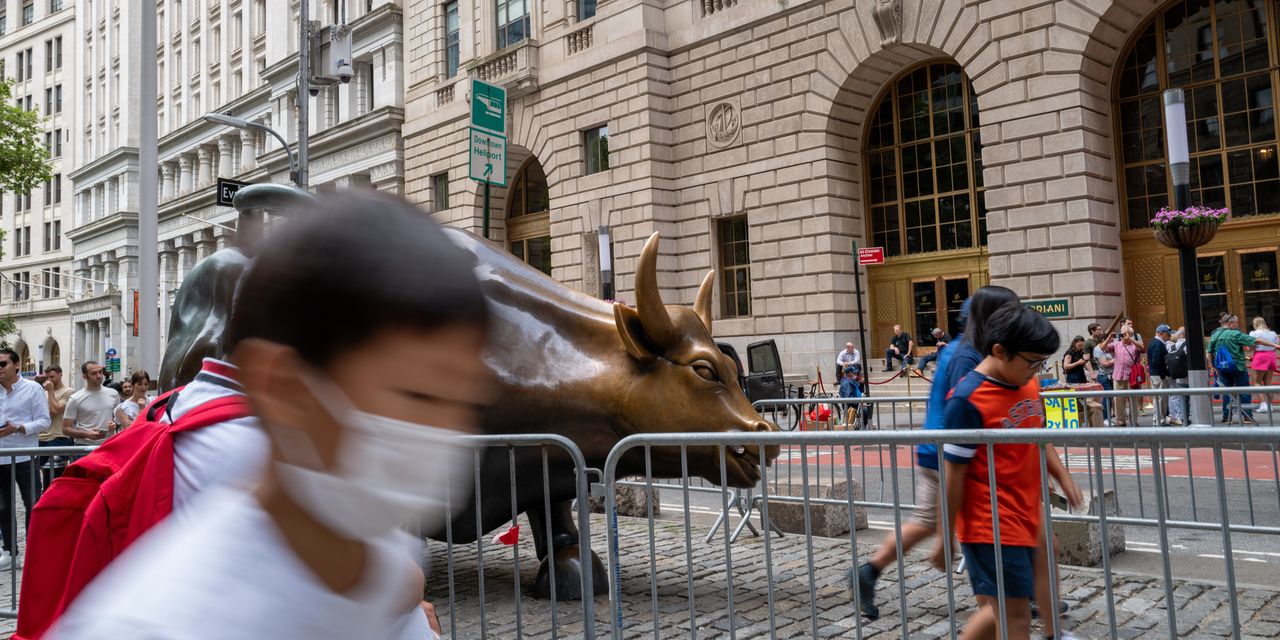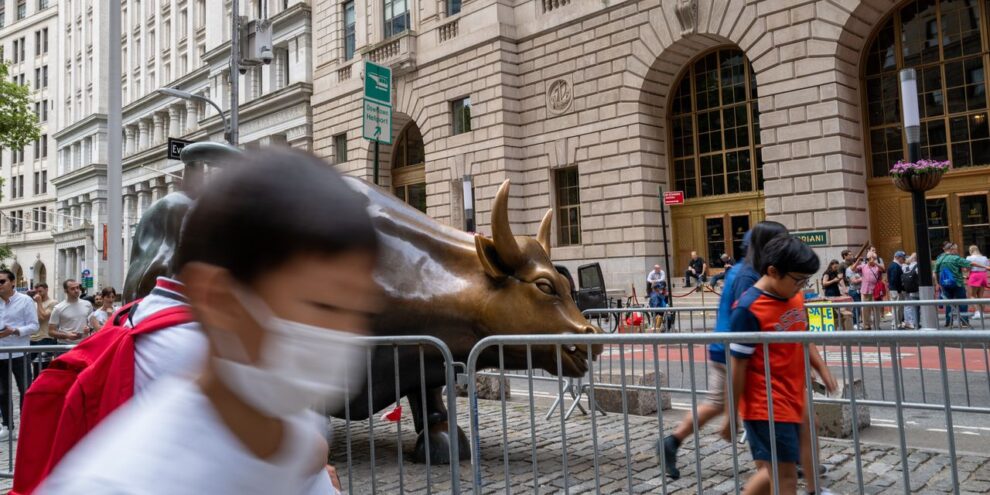
U.S. stocks closed higher Friday, shaking off earlier weakness that came after a disappointing gauge of manufacturing activity underlined fears that aggressive monetary tightening by the Federal Reserve could lead to a sharp slowdown.
How did stocks trade?
- The Dow Jones Industrial Average DJIA, +1.05% rose 321.83 points, or 1%, to close at 31,097.26.
- The S&P 500 SPX, +1.06% gained 39.95 points, or 1.1%, to finish at 3,825.33, snapping a four-day losing streak.
- The Nasdaq Composite COMP, +0.90% rose 99.11 points, or 0.9%, to end at 11,127.85, also snapping four straight days of losses.
For the week, the Dow booked a 1.3% loss, while the S&P 500 fell 2.2% and the Nasdaq dropped 4.1%, according to FactSet data.
What drove markets?
Stocks ended higher Friday ahead of the July 4 holiday weekend, but all three major stock benchmarks still suffered weekly losses amid growth concerns in the U.S.
“We’ve seen the multiple compression happen with this huge downdraft in the first half of the year, but “analysts have retained their earnings estimates for the most part up until the last week or two,” said Wayne Wicker, chief investment officer at MissionSquare Retirement, in a phone interview Friday. “Earnings estimates are probably going to be coming down in a wider range of companies.”
Stocks initially lost their footing after the Institute for Supply Management’s closely watched manufacturing index fell in June to a two-year low of 53%. Economists polled by The Wall Street Journal had forecast a fall to 54.3%, from 56.1% in May. A reading above 50% indicates an expansion in activity.
“Directionally, the manufacturing surveys are slowing,” said Wicker.
The ISM report showed high inflation remains a big problem for manufacturers, though price pressures eased. Meanwhile, a new orders subindex fell into contraction territory, underlining worries over a slowing economy.
A more encouraging message from the ISM index “is that shortages are easing more rapidly,” said Andrew Hunter, senior U.S. economist at Capital Economics.
“Overall, while the ISM index lends support to concerns that aggressive Fed tightening will drive a sharp slowdown in the economy, the details suggest that slowdown could result in a faster drop-back in inflation than many are now assuming,” he said.
The S&P 500 lost 20.6% in the first half of 2022, crushed by fears that central banks’ moves to raise interest rates in response to lingering high inflation may trigger contraction across many developed economies.
U.S. markets will be closed on Monday for the Independence Day holiday.
Investors this year have been anxious about the possibility of the Federal Reserve triggering a recession by hiking its benchmark rate too much too fast as it attempts to tame high inflation.
“Until we get some signal from the Fed that they’re ready to either reduce the size of the hikes or pause, I don’t see how the market will really have the ability to create any sustained upside momentum,” said Randy Frederick, managing director of trading and derivatives at Charles Schwab, by phone Friday.
Central banks misjudged inflation and found themselves playing catch up, even if sharply tightening policy may cause an economic downturn, according to Richard Hunter, head of markets at Interactive Investor.
Read: Eurozone inflation rose to record high of 8.6% in June
“The imminent quarterly reporting season will heap pressure on companies to reverse the trend of declining sentiment. This will be no mean feat, given the pressure on margins and an uncertain outlook, and as seen in the previous quarter, earnings misses will be severely punished,” he said in a note to clients.
In the view of Charles Schwab’s Frederick, it’s “about time” for earnings revisions to start coming down. “Historically we know that analysts have been notoriously slow to bring down earnings expectations when we’re heading into a recession,” he said.
Which companies were in focus?
- General Motors Co. GM, +1.35% warned of a second-quarter earnings shortfall, as vehicle wholesale volumes were hurt by the timing of semiconductor shipments and other supply chain disruptions. Shares rose more than 1.3%.
- Shares of Micron Technology Inc. MU fell 3% after the memory-chip company’s forecast-beating earnings came with a poor outlook.
Opinion: The chip boom likely over, as Micron says it’s in a ‘downturn’
How did other assets fare?
- The yield on the 10-year Treasury note TMUBMUSD10Y, 2.894% fell more than 7 basis points to 2.901%, the lowest since May 31 based on 3 p.m. Eastern Time Levels, according to Dow Jones Market Data. Bond yields and prices move in opposite directions.
- The ICE U.S. Dollar Index DXY, +0.42%, a measure of the greenback’s strength against a basket of rivals, was up 0.4%.
- Bitcoin BTCUSD was trading up 3.8% at $19,439.
- In oil futures CL.1, +2.55%, West Texas Intermediate crude for August delivery CLQ22, +2.55% rose 2.5% to settle at $108.43 a barrel. U.S. oil prices gained 0.8% for the week.
- Gold futures for August delivery GCQ22, +0.31% fell 0.3% to settle at $1,801.50 an ounce, marking the lowest finish for the most-active contract since February, according to Dow Jones Market Data.
- In European equities, the Stoxx Europe 600 Index SXXP, -0.02% slipped less than 0.1% Friday and fell 1.4% for the week. London’s FTSE 100 Index was also little changed Friday, booking a weekly loss of 0.6%.
- In Asia, Japan’s Nikkei 225 Index JP:NIK closed down 1.7% Friday, booking a 2.1% decline for the week. China’s Shanghai Composite Index CN:SHCOMP fell 0.3% Friday, but saw a weekly gain of 1.1%. The market for the Hang Seng Index in Hong Kong was closed Friday, but gained 0.6% for the week, according to Dow Jones Market Data.
—Jamie Chisholm contributed to this report.





